Disney has changed over the past few decades. To many fans, this company, once lauded for its quality and artistic innovation, has become a shadow of its former self.
There can still be a lot to love with modern original Disney films… and a lot that leave something to be desired.
We’re looking at the highs, lows, and mehs of modern Disney. Welcome to the final week of our Disney adventure, here in Disneyvember!
—
Raised in isolation, a young girl grows up with no contact with the outside world beyond one animal friend and her over-protective mother. But when a dashing young man stumbles across her tower, Rapunzel’s life will never be the same.
Today I’m raving about Disney’s Tangled.
It’s honestly shocking that apart from a few references, I’ve somehow managed to avoid talking about my favorite Disney film.
I adore Tangled. From the music to the characters to the cinematography to the sets, every piece feels warm and wonderful. You can feel the love and care put into the film.
Production
After the incredible success of Snow White and the Seven Dwarfs in 1937, Disney frantically sifted through fairytales to turn into their next film. “Rapunzel” was one of the stories up for consideration, yet it remained locked in its tower until the mid-90’s, when Disney animating legend Glen Keane pitched a version of the tale. Unfortunately, Keane’s talents were needed for Tarzan, leaving “Rapunzel” to watch the world from her window until the early 2000’s.1
Even after production time finally came, Tangled underwent incredible changes, especially in its art style. When Keane was initially set to direct, he’d pursued a darker, Rembrandt-inspired art style, but creators felt this style weighed the film down. When health issues forced Keane to shift from directing to assisting animation, new directors Nathan Greno and Byron Howard shifted the art style to something lighter, airier—less Rembrandt and more Cinderella. This shift assisted tremendously with production, not only helping the story take shape, but also cementing the tone that makes Tangled so charming, so memorable, and such a perfect companion to the Disney classics.2
The Tone
Tangled does a superb job balancing darker elements with its clever charm, creating a world that feels airy and magical while also remaining grounded and relevant. This is a particularly remarkable feat considering the darker elements of the original story, which involved child kidnappings and people throwing themselves off Rapunzel’s tower.
Not that dark elements are foreign to Disney films. “[A] lot of Disney movies have a sinister core—Cruella de Vil wants to skin puppies for their fur!” director Greno pointed out. “The trick is to find ways to balance these elements with lighter, fun entertainment and create a visual style with the same balance.”3
The team behind Tangled achieved this balance by focusing on a single core idea, which art director Dave Goetz described as “appeal.”
We don’t want it to be grim, we don’t want it to be threatening or uncomfortable—even when there’s something really dramatic happening on screen, or something really horrible—it’s all been cocooned in this appealing package.4
But Tangled’s appeal isn’t the prepackaged, plasticy kind; Glen Keane insisted the story maintain an authentic, sincere tone. No glitz and gilding here.
For instance, there was a period during production where, much like Enchanted, the production team considered an “update” to the tale: it would feature two teens in a modern setting while poking fun at fairytales,5, 6 but Keane resisted this direction.
“I think when Glen first pitched Rapunzel, he really wanted it to be a sincere fairy tale; because Glen is a heartfelt, sincere guy who believes in things such as love and true emotion, and he really wanted to share that with the audience,” Greno recalled. “Glen, rightly so, said ‘I can’t do this kind of movie. This has to switch back, or else I can’t do it.’”7
And so it did.
I don’t believe Tangled would be near as good of a film without Keane’s commitment. Tangled shines sincerity from every facet, from its bright and inviting art design to its characters to its storytelling.
The Worldbuilding
In keeping with Keane’s vision of sincerity, the welcoming, appealing nature of Tangled had to also be, as visual effects supervisor Steve Goldberg put it, “believable and tangible.”8 And part of how Tangled accomplished this was through John Lasseter’s focus on worldbuilding. Co-director Byron Howard shared:
Even when you’re pitching new ideas, that’s the first thing [John Lasseter] says, “Think about the world,” because if you create a world, rather than just a character or a story, you can watch it, and it can play out and resolve within its own reality, so that it never feels false or that it’s “written.” You believe that you’re actually seeing this girl’s life play out, and feel that you want to go back and spend more time with these people. Be sure you have enough detail there so people feel like [the movie is] a full experience that they can just lose themselves in.9
You can see this attention to detail in almost every art design decision in Tangled but nowhere more clearly than Rapunzel’s tower. While the tower is a prison, it’s also a home to Mother Gothel and Rapunzel; it needed to feel lived-in and homey while still being able to serve both functions… and as a literal canvas for Rapunzel’s wants, dreams, and lessons.10
“This girl is making her walls go away by painting on them,” Glen Keane explained.11
Glen and his daughter, Claire Keane, who worked as a visual development artist for the film, were both on the same page with this approach. “‘We didn’t want [the paintings] to just be decorative. This is all of her subconscious and all of her conscious desires… Rapunzel paints on the walls and she paints on her furniture and it’s all connected.” To create this kind of art, Claire found inspiration in her own daily activities, doodling as she worked.12
And the results are stunning. The art book is peppered with dozens of Claire’s paintings, some of which ended up on the inside of the tower in the actual film—all illustrating Rapunzel’s art style, her interests, and the things she’s studied over the years.13
The worldbuilding in Tangled may be fantastic, but that’s not to say the characters aren’t important too. In fact, I’d argue Tangled’s tone and tale wouldn’t have worked at all were it not for its lovable cast.
The remainder of this post will contain spoilers for
Tangled
The Characters
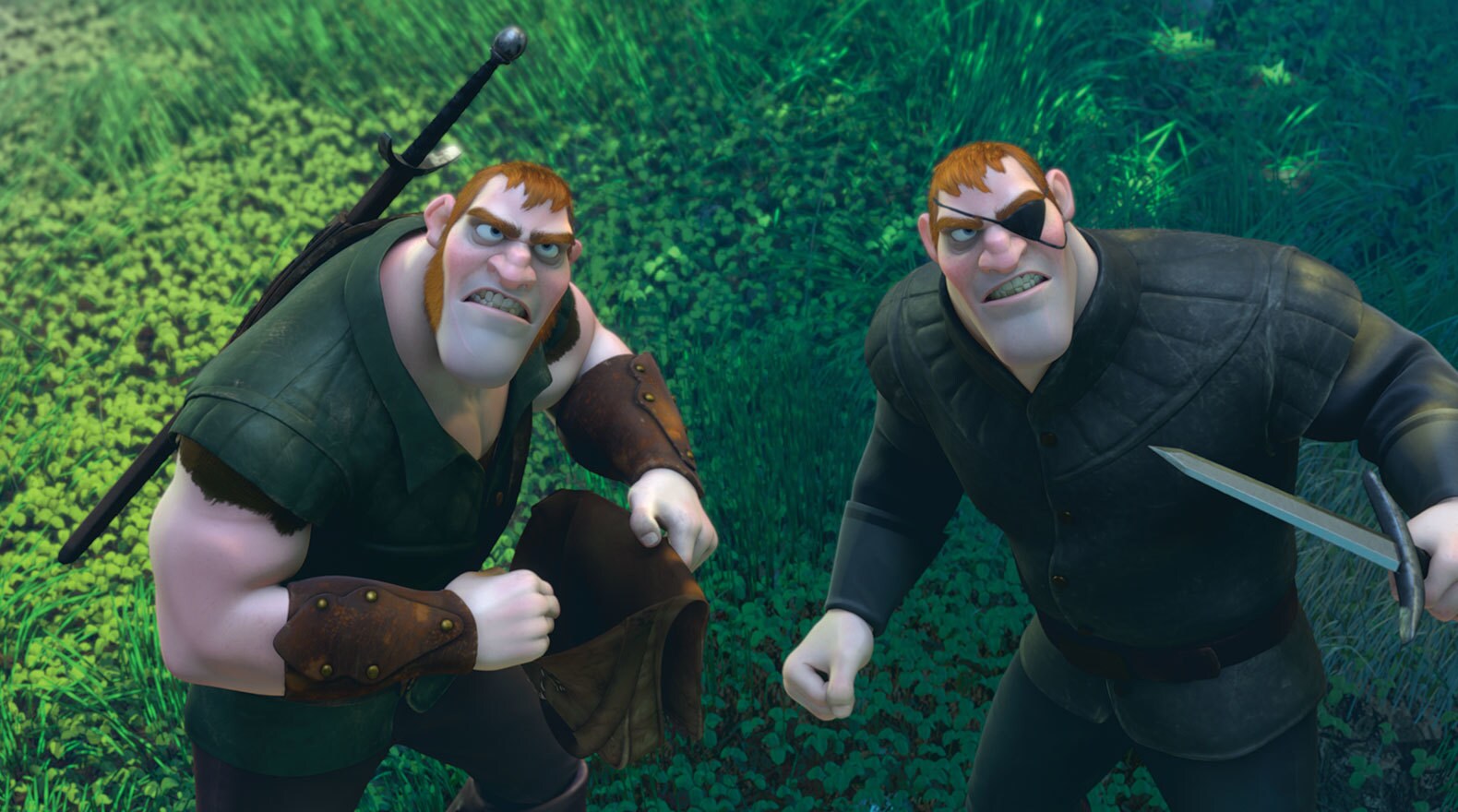 |
| The Stabbington Brothers. Kinda cute, but double the trouble. |
Everyone in Tangled—even the villainous Mother Gothel—has an element of likeability: that ever-present “appeal” that Goetz prized so dearly. Even the “Stabbington Brothers,” the goons who Gothel ropes into helping her kidnap Rapunzel back, have some element of likeability—though they’re only attractive outwardly and not inwardly. This contrasts with the thugs at the Snuggly Duckling tavern, who appear hideous but are goofy and nearly as endearing and quirky as Rapunzel herself.
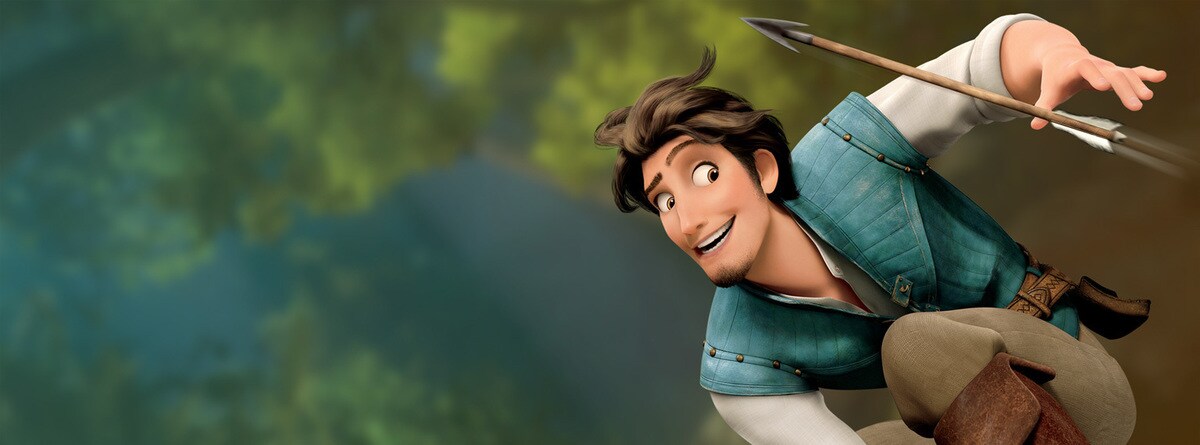 |
| Disney 2010 |
And then there’s the love interest, Flynn Rider. I adore Flynn—and not just because he’s the most attractive Disney love interest to date! I’m a sucker for male characters whose life experiences have left them emotionally closed. Though Flynn isn’t as hardened as the love interest in Enchanted, Flynn’s experiences have left him just as hurt (and likely had a strong hand in his delightfully sarcastic sense of humor). Having grown up an orphan, Flynn seeks escape in the riches he thinks will make him happy. He lives his life without any regard for how his pursuits might affect those around him… until he meets Rapunzel and learns there’s so much more to life than seeking one’s own happiness. By the end of the film, Flynn proves he’s equal parts fun, clever, vulnerable, and sweet.
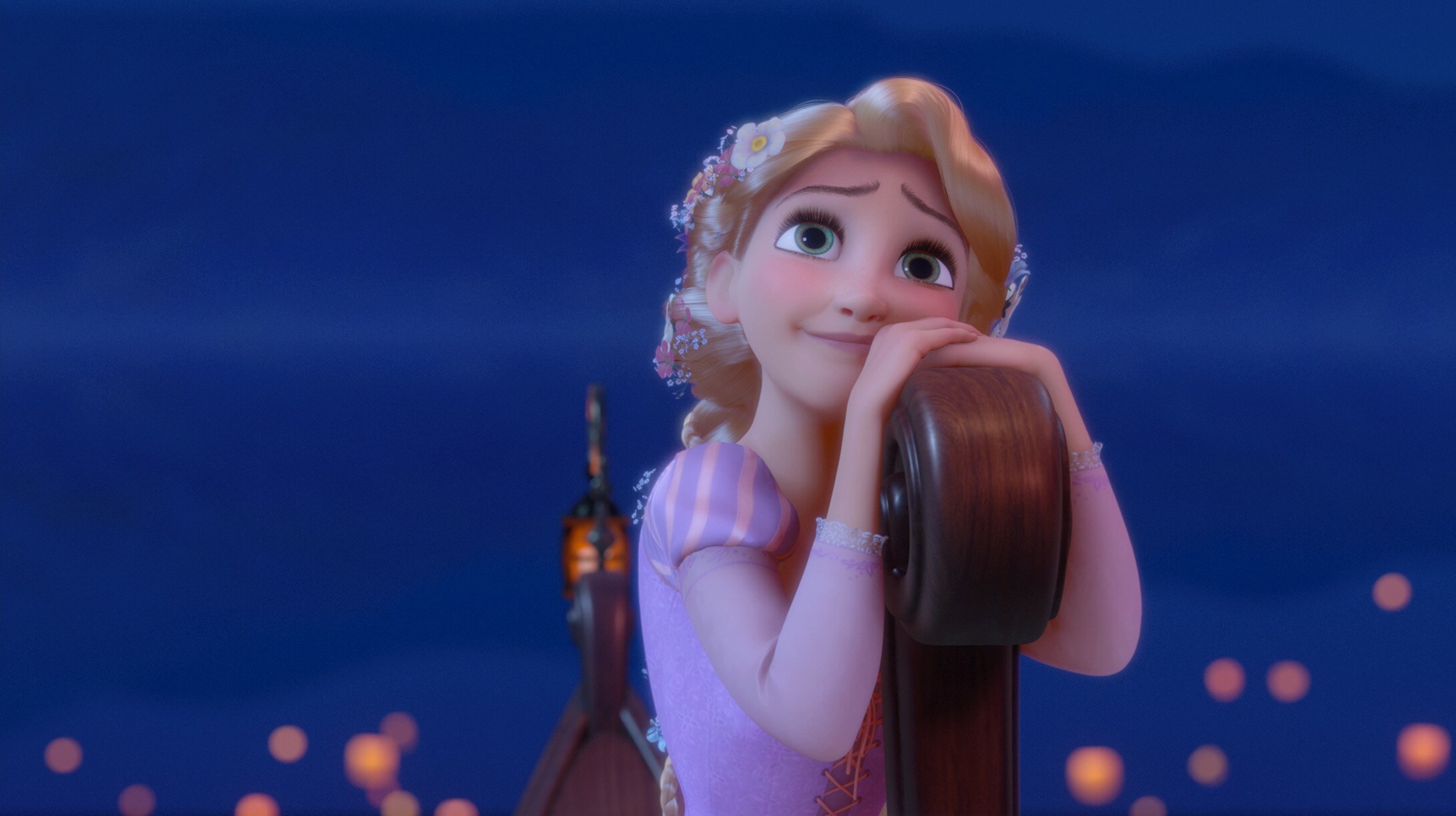 |
| Disney 2010 |
But Rapunzel takes the cake when it comes to likeability. Much like Giselle from Enchanted, Rapunzel is a character I adore and relate to. I love her bubbly, perky, but thoughtful personality. I love how vibrant and loving she is, how open she is. She really is like a ray of sunshine, bringing light and warmth to every life she touches: she makes other people better than what they were before.
As Keane put it, “This is a girl who has to get out and bless the world.”14
If Tangled’s appealing characters are the muscle that move the story and the commitment to sincerity is its backbone, then the respect for “Rapunzel’s” source material is what binds the two together.
Respect for What Came Before
Disney hasn’t always been careful about their source material, whether it’s failing to attribute sources such as with the Kimba/Lion King controversy or failing to pay homage to the original fairytales that inspired films such as Frozen or The Princess and the Frog. However, Tangled is refreshingly respectful to its source material.
As with almost every fairytale, “Rapunzel” has had many different versions, from a variety of French tales to the most well-known story by the Brothers Grimm.15 The variety among these versions makes it all the more impressive how many details from the original tales Disney preserved, down to ensuring Rapunzel possessed magic powers (in many versions of the tale, Rapunzel uses magic abilities to escape from her captor).16
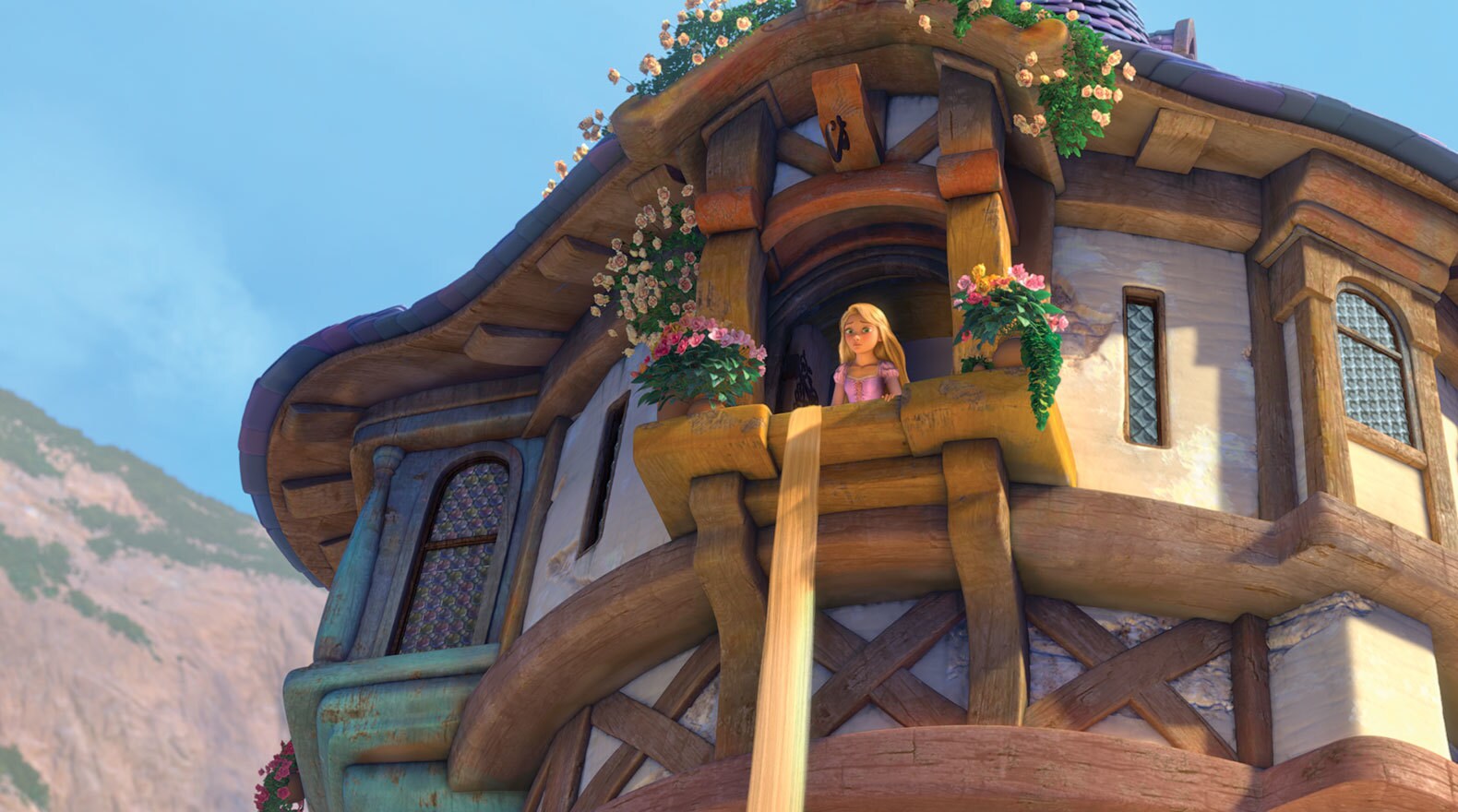 |
| Disney 2010 |
Of course, Tangled has the most in common with the Brothers Grimm version of the story. And while not every plot point made it in, all the major parts are there: a father-to-be brings his pregnant wife a particular plant out of concern for the wellbeing of their child. A villainous woman who considers the plant her own ends up in custody of the child, whom she imprisons in an impregnable tower while masquerading as the child’s true mother. The wicked woman uses Rapunzel’s uncut golden hair as her means of scaling the tower, calling the locks down with the classic, “Rapunzel, Rapunzel, let down your hair.” One day, a handsome young man comes across the tower and falls in love with Rapunzel. When the witch learns of it, she sets a trap for the young man. Someone ends up tumbling out of the tower, Rapunzel’s tears magically heal her beloved, and she and he live happily ever after.17
The creators carefully braided the plot points of this timeless tale with themes any contemporary viewer can relate to.
The Themes
Perhaps Glen Keane crystallized the theme best: it’s about “this idea of independence, a huge personal leap of ‘Me becoming Myself.’”18 A coming-of-age tale “with this young, vibrant, gifted person who has to get out and realize who she’s meant to be.”19
But this coming-of-age tale isn’t one just for children; as animation supervisor Clay Kaytis points out; this is a “universal” theme. “I think that Rapunzel’s character has a message that audiences will understand, either because they have the perspective that comes with growing up, or they’re wondering what they will become because they’re young.” Young or old, we all understand what it feels like to wonder… “[W]hen does my life begin?”20
Like many others of my generation, I know this question all too well. I feel stuck in the same place in life. No matter how comfortable my rut may feel, I know there’s something more out there for me, and it fills me with longing: the same feeling Rapunzel gets as she gazes out her window. We all know there’s something out in the wide world we were meant to do and be. And when anything keep us from experiencing that, we feel stuck… trapped.
So many of my generation have become trapped vocationally and economically. We feel like we can’t support ourselves, like we’re children all over again. It’s a situation many strive to get out of but don’t always have the best luck. And all the while, we can’t help but wonder: “When will my real life begin?”
The Conclusion
As I was working on this article, researching all the love and care that went into making my favorite Disney flick, I kept finding myself asking the same question: why do I love Tangled?
The answer was hard to pin down. Because the truth was, I love Tangled for all the reasons that I love so many of my favorite films, especially good Disney flicks: it’s the lovable characters, the gorgeous art design. The humor. The quirky and fun but sincere tone throughout the whole story.
I didn’t want to just repeat the same things I say for every movie I’ve praised though. Not only does that make for a boring read, but to me, Tangled is something truly unique, special. I wanted to honor that by working hard to crystallize exactly why it felt so different, so extra-special, to me.
The fact is, I feel Tangled does everything right that Disney does best: its charming characters. Its memorable villains. Its excellent music. Its perfect tone and balance between humor and dark, grim reality, of life truths with joyous magic and a hopeful happy ending. The fact I resonate so much with Rapunzel or wish to spend a day with Flynn Rider is really just icing on the cake compared to all that.
John Lasseter said that “[f]rom the beginning, our directors… wanted this film to sit on the shelf next to Walt’s fairy tales…”21
The entire crew clearly poured their hearts into this film, wanting to honor the things they treasured that had come before. Disney’s legacy was certainly never far from producer Roy Conli’s mind: “Tangled will be the fiftieth Disney animated feature. That’s a huge inducement to do it right.”22 And I think the only way to “do it right” was to follow those sincere feelings—the genuine love for Disney that people like Glen Keane have. That people like directors Nathan Greno and Byron Howard have.
“Both of us have a deep love of classic Disney, including the parks and the animated films…” Greno and Howard explained.
When Disney retells a classic story, the Disney version becomes the one people remember forever. We didn’t take that lightly.
We knew the film should be a true fairy tale, one that drew inspiration from Disney’s rich artistic history… Tangled is a direct descendant of these films, inheriting some of their best qualities.23
Tangled did indeed inherit some of Disney’s best qualities. And I think that’s ultimately why I adore this labor of love with unabashed delight.
—
I hope you enjoyed these in-depth looks at Disney flicks the past few months! Next week, we’ll be going “Plus Ultra” with a series I haven’t discussed for a while. 😉
If you’re still hungering for more Disney, feel free to check out my first Disneytember post on Moana here!
—
Notes and References:
- Jeff Kurtti, The Art of Tangled (San Francisco, CA: Chronicle Books LLC, 2010), 11-12.
- Jeff Kurtti, The Art of Tangled, 11-12, 28-29, 35.
- Jeff Kurtti, The Art of Tangled, 29.
- Jeff Kurtti, The Art of Tangled, 45.
- Jeff Kurtti, The Art of Tangled, 12.
- Brooks Barnes, “The Line Between Homage and Parody,” NY Times, November 25, 2007, accessed October 31, 2019.
- Jeff Kurtti, The Art of Tangled, 12.
- Jeff Kurtti, The Art of Tangled, 45.
- Jeff Kurtti, The Art of Tangled, 44.
- Jeff Kurtti, The Art of Tangled, 47, 50.
- Jeff Kurtti, The Art of Tangled, 50.
- Ibid.
- Ibid.
- Jeff Kurtti, The Art of Tangled, 53.
- Jeff Kurtti, The Art of Tangled, 8, 9.
- Ibid.
- Ibid.
- Jeff Kurtti, The Art of Tangled, 150.
- Jeff Kurtti, The Art of Tangled, 58.
- Ibid.
- Jeff Kurtti, The Art of Tangled, 6.
- Jeff Kurtti, The Art of Tangled, 29.
- Jeff Kurtti, The Art of Tangled, 7.
All photos property of their respective owners and used under US “Fair Use” laws. Unless otherwise specified, all photos are from Disney’s Official Tangled webpage.
Tangled and all related terms are the property of Walt Disney Studios. And I am not affiliated with them.

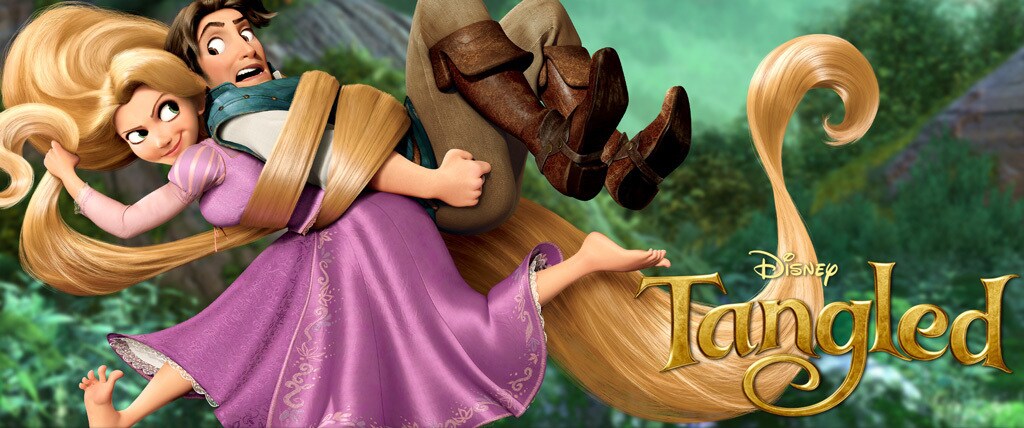
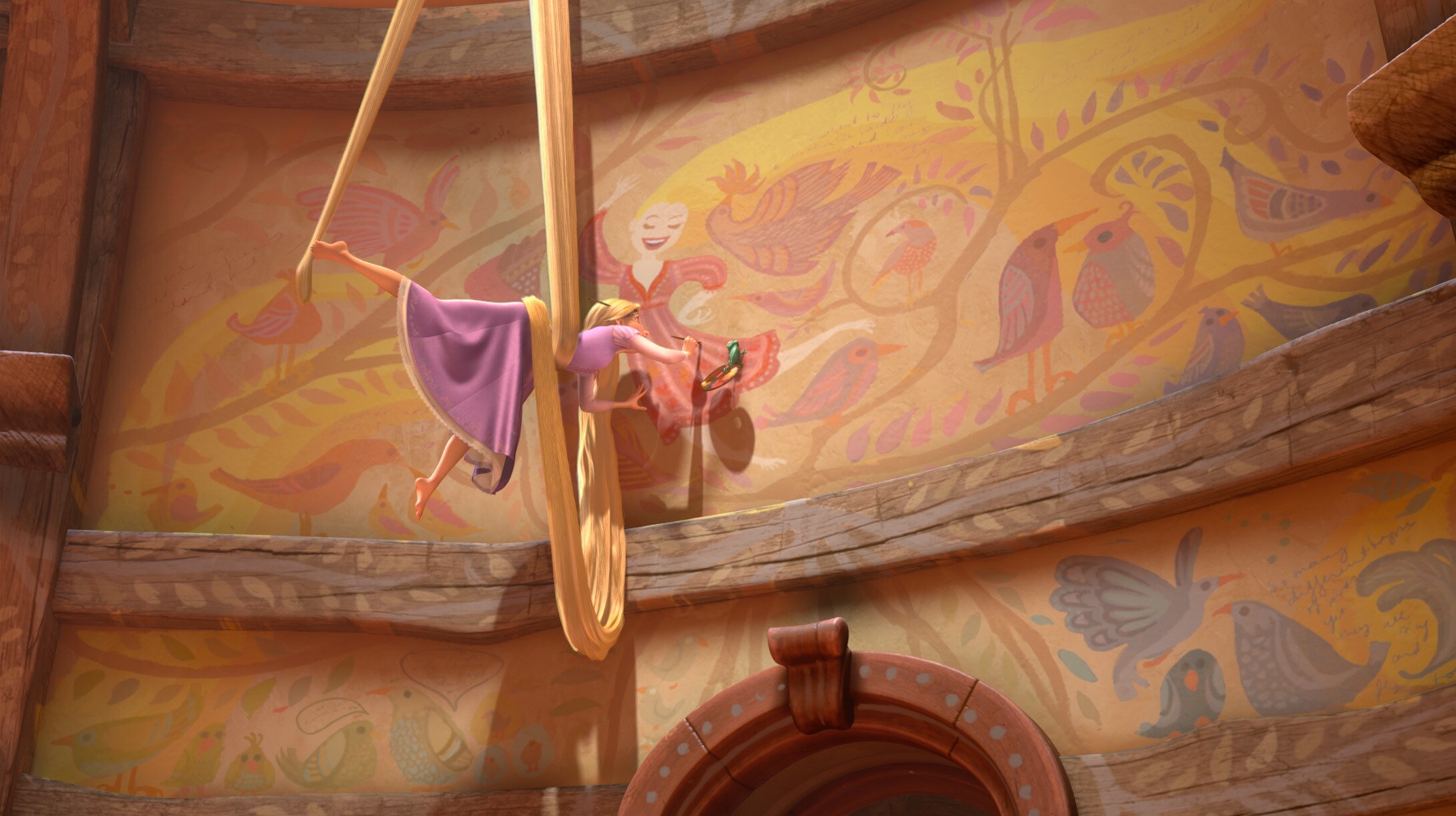
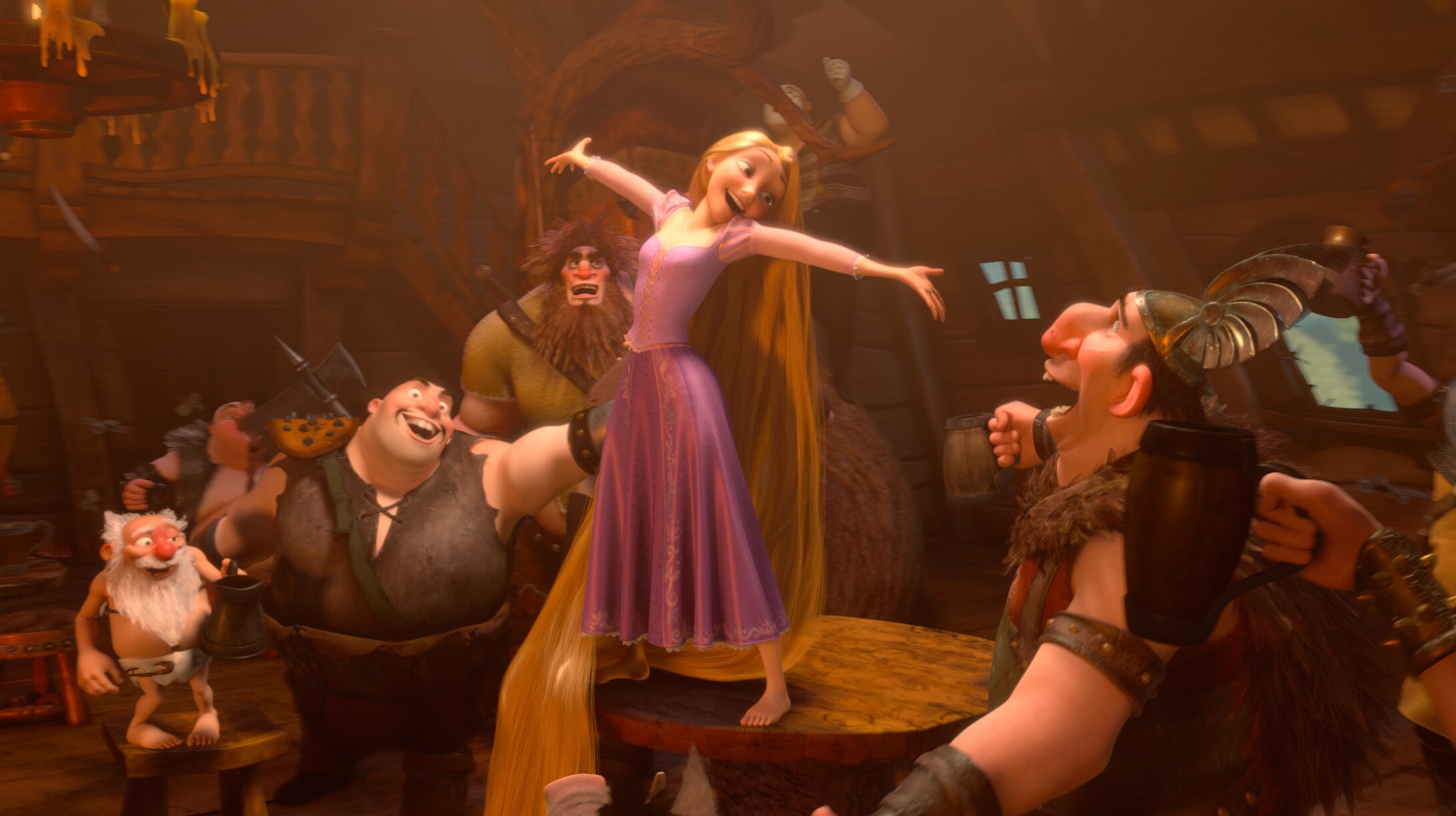
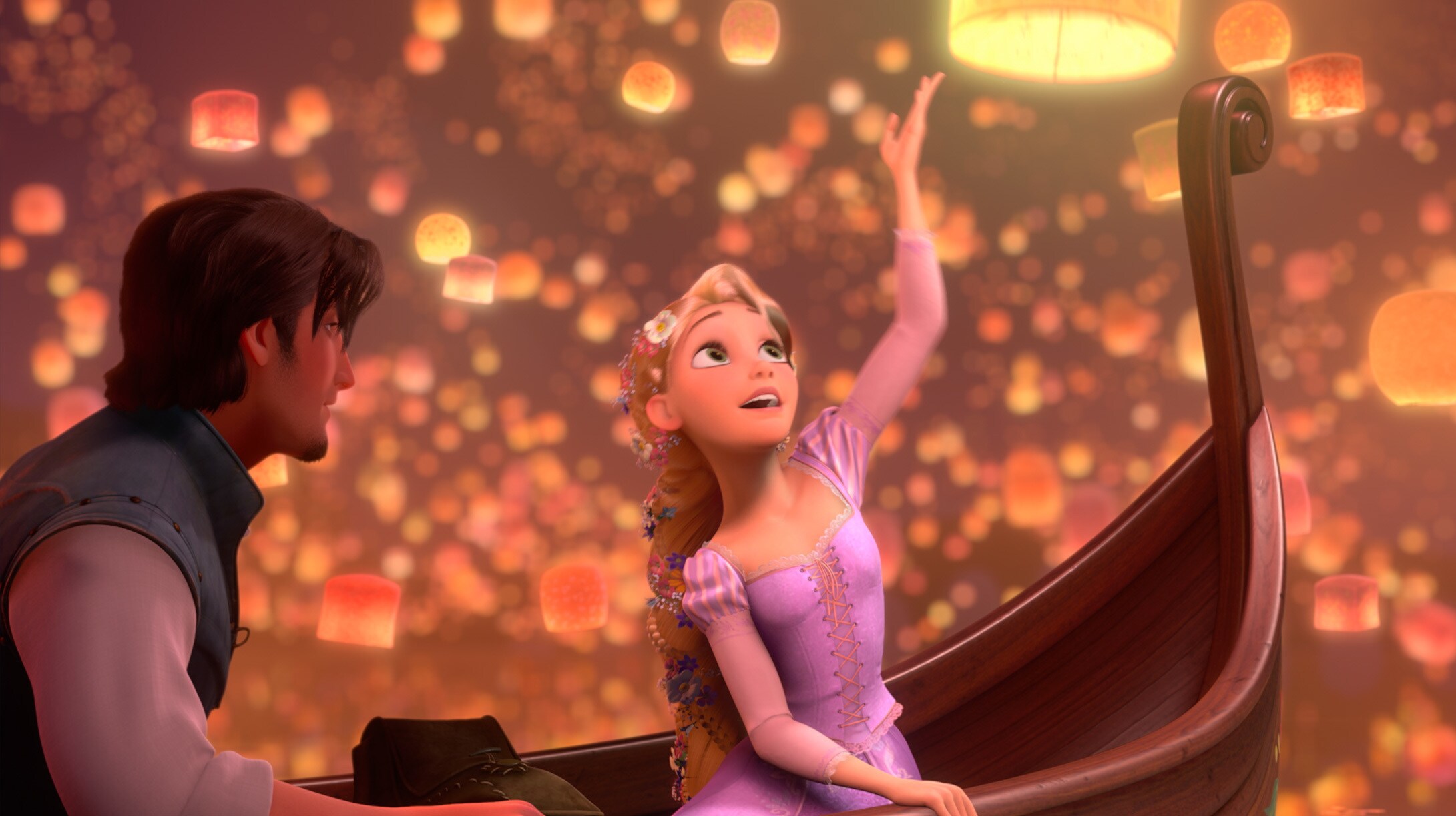
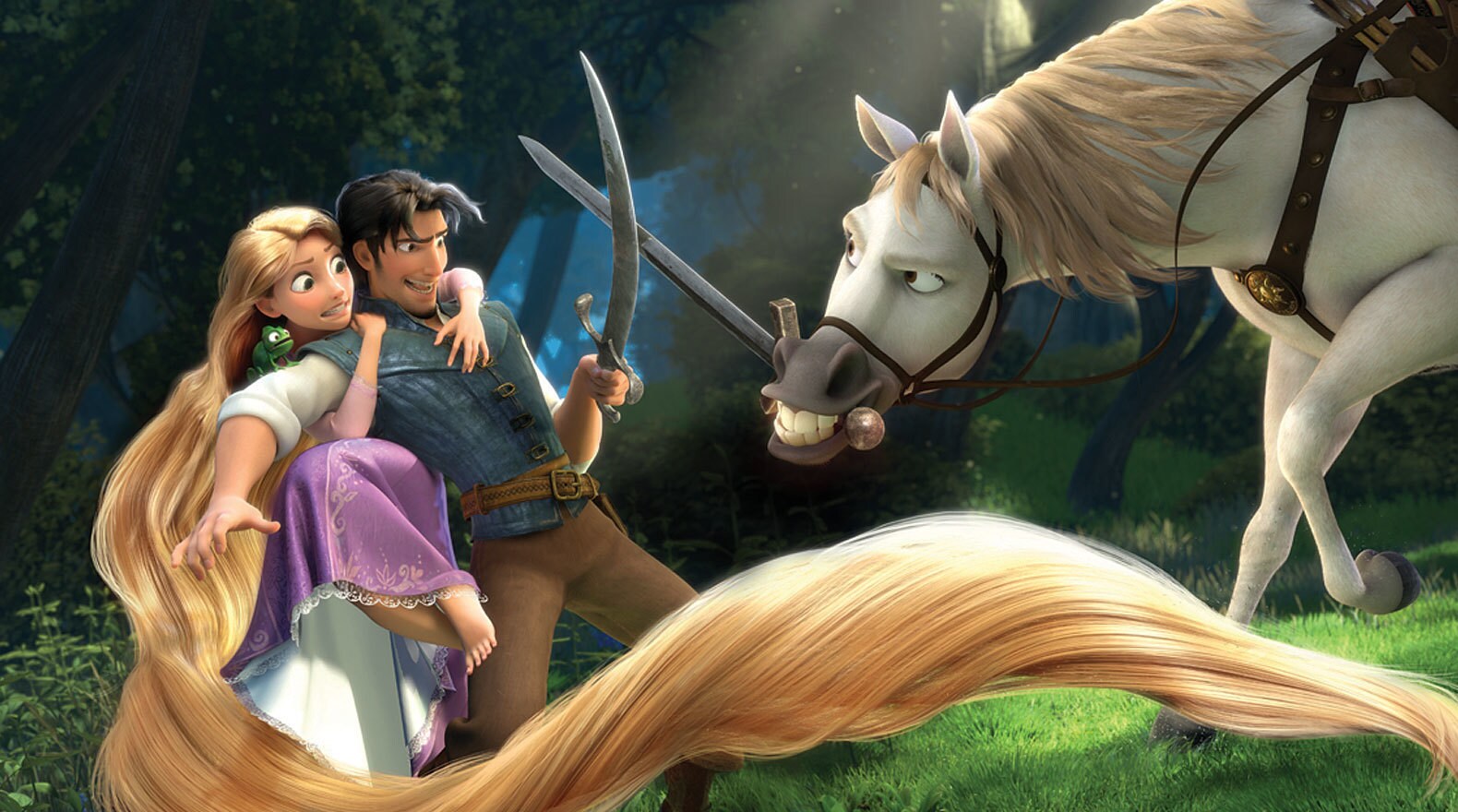
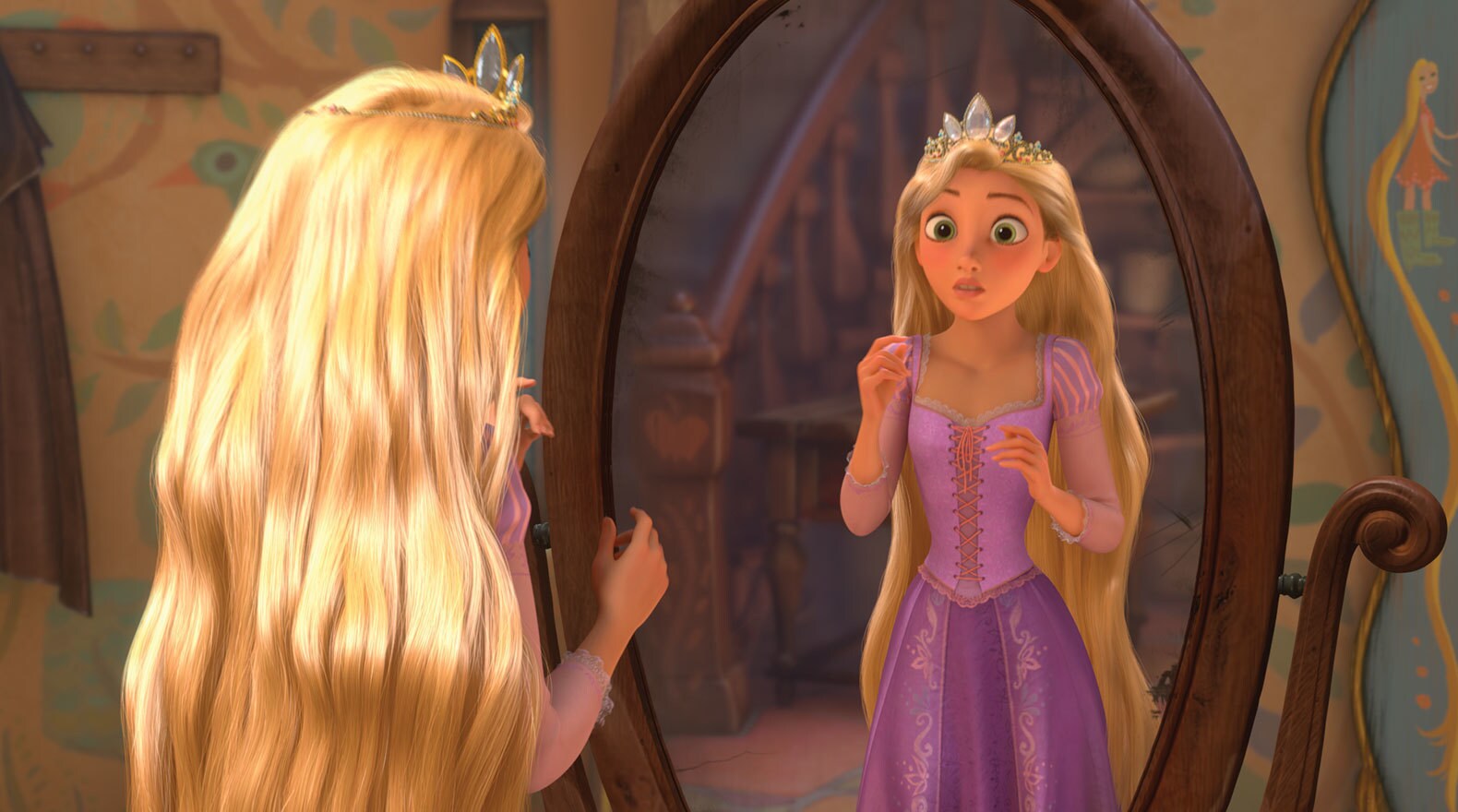
Leave a Reply